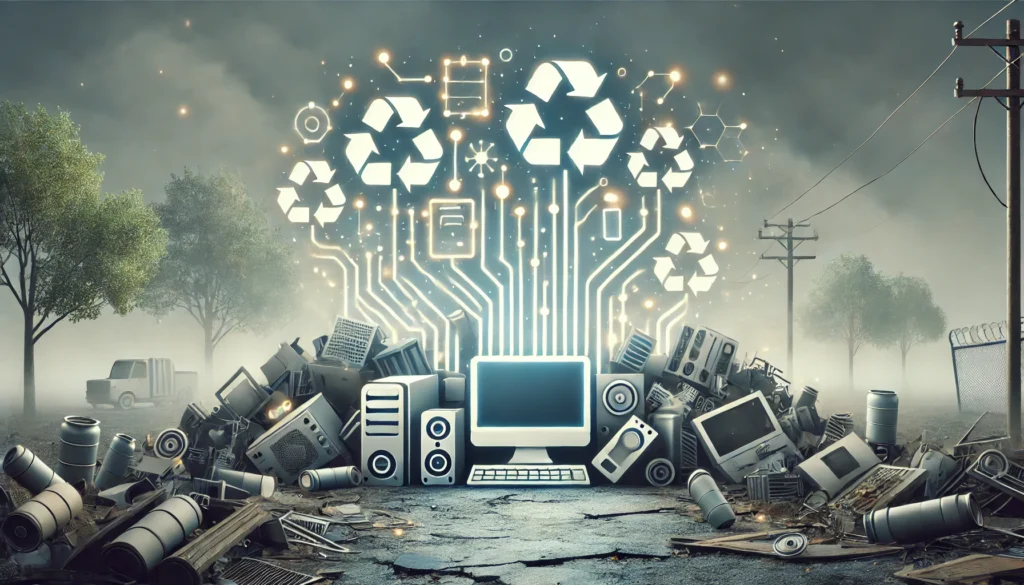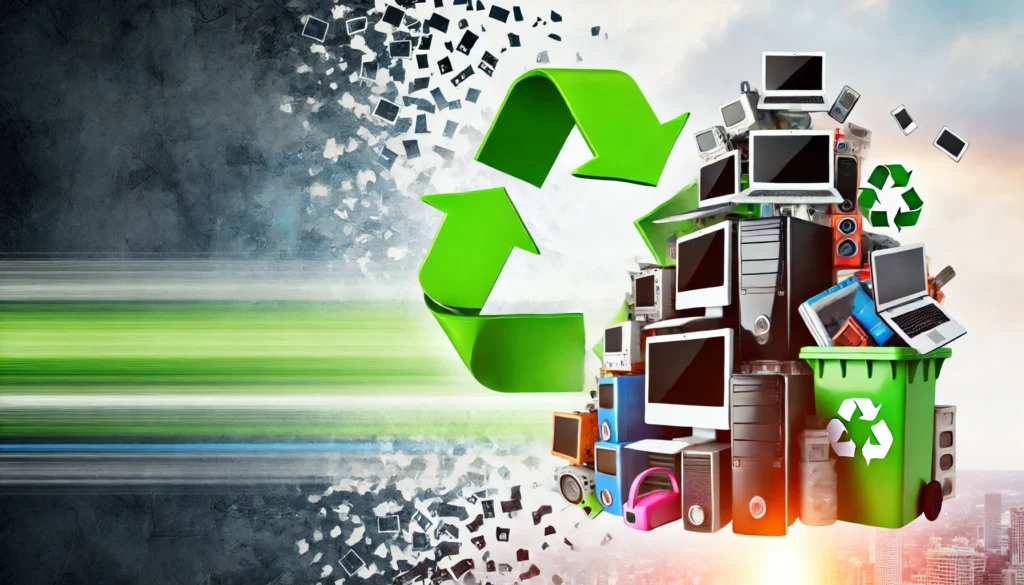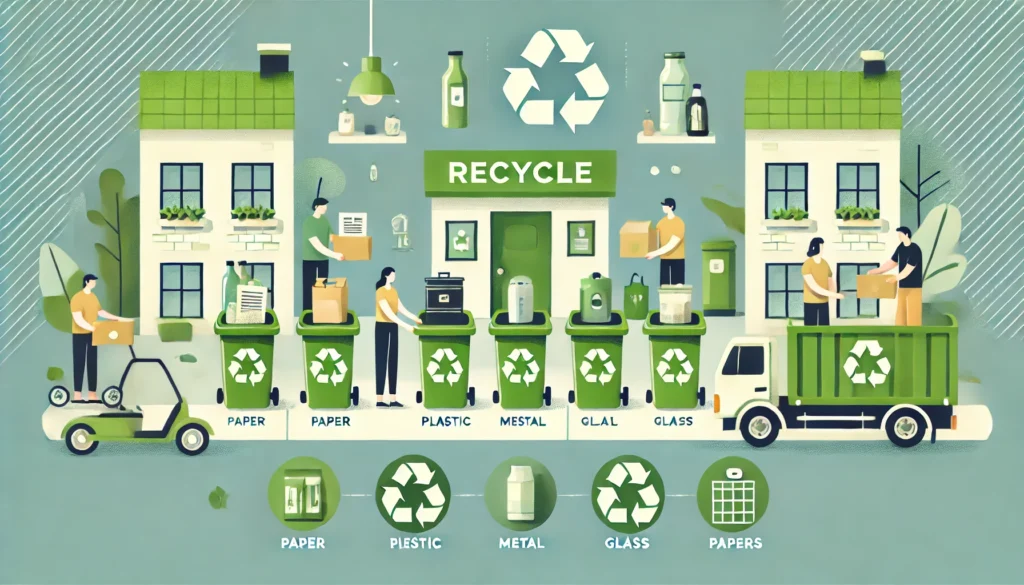E-waste, or electronic waste, is an ever-growing concern in today’s technology-driven world. With the rapid pace of technological advancement, our homes, offices, and industries are flooded with electronic gadgets. However, once these devices become obsolete or break down, they turn into e-waste. Understanding what e-waste is, its impact on human health and the environment, and how we can manage it is critical for a sustainable future. In this blog post, we will explore these aspects in detail and provide practical solutions for managing e-waste effectively.
What is E-Waste?
E-waste refers to discarded electronic devices and their components. This can include everyday items like old computers, mobile phones, televisions, printers, batteries, and other gadgets. Once these devices are no longer in use, they are often thrown away without proper disposal methods, leading to significant environmental and health hazards. Examples of e-waste can range from broken smartphones to outdated home appliances like refrigerators.
The Growing Problem of E-Waste
As technology continues to evolve, so does the amount of e-waste generated globally. According to reports, millions of tons of e-waste are produced every year. Unfortunately, only a small fraction of this waste is recycled properly. The improper handling of e-waste poses serious threats to both our health and the environment.
Health Impacts of E-Waste
E-waste contains a range of toxic chemicals and metals that can be harmful to human health if not managed properly. Let’s explore some key health risks associated with e-waste:
- Toxic Chemical Exposure:
Many electronic devices contain harmful chemicals such as lead, mercury, cadmium, and chromium. When these substances are released into the air, water, or soil, they can enter the human body and cause health problems. For example, lead exposure can damage the brain, while mercury can affect kidney function. - Respiratory Diseases:
Burning e-waste releases dangerous fumes and gases, which can lead to respiratory illnesses. These fumes can cause lung infections, asthma, and chronic bronchitis. This is especially problematic for people living near e-waste recycling centers where improper burning of materials often occurs. - Damage to the Nervous System:
Exposure to heavy metals like lead and mercury can impair brain function, particularly in children. This exposure can lead to developmental delays, cognitive problems, and even behavioral issues. - Increased Cancer Risk:
Certain chemicals in e-waste are known carcinogens. When improperly disposed of, they can increase the risk of cancer, especially in people who come into direct contact with these substances. - Reproductive Health Issues:
Toxic materials like cadmium and lead can interfere with reproductive health, leading to infertility and pregnancy complications. For example, high cadmium exposure can cause long-term reproductive damage in both men and women.
Environmental Impacts of E-Waste
The environmental consequences of e-waste are equally concerning. Let’s look at how e-waste affects our planet:
- Soil and Water Pollution:
When electronic waste is improperly disposed of, harmful chemicals seep into the soil and contaminate groundwater. For instance, a discarded battery can leach toxic metals into the earth, poisoning the surrounding water and agricultural lands. - Air Pollution:
Burning e-waste releases harmful gases, such as dioxins and furans, which contribute to air pollution. These gases not only degrade air quality but also pose serious health risks for those who breathe them in. - Impact on Biodiversity:
The toxic chemicals found in e-waste can harm animals and plants. For example, mercury pollution from e-waste can make its way into the food chain, impacting wildlife and even human populations that rely on these animals for food. - Climate Change:
The release of greenhouse gases from e-waste contributes to climate change. Electronic devices often contain compounds that, when not disposed of properly, release gases that accelerate global warming.
Practical Solutions for Managing E-Waste
While the impact of e-waste is alarming, there are practical ways to manage it effectively:
- Recycling and Reuse:
One of the most effective ways to reduce e-waste is through proper recycling and reuse. By recycling old devices, we can recover valuable materials and reduce the need for new raw materials. For example, a broken mobile phone can be dismantled, and its components, such as gold and silver, can be reused in manufacturing new devices. - Raising Awareness:
Educating people about the dangers of e-waste is key to reducing its impact. Encouraging responsible e-waste disposal and promoting the benefits of recycling can go a long way in managing e-waste effectively. - Sustainable Manufacturing:
Manufacturers also play a vital role in reducing e-waste. By designing products that are durable, easy to repair, and recyclable, companies can significantly reduce the amount of electronic waste produced. For example, some companies are already creating modular phones that allow users to replace broken parts without discarding the entire device.
Conclusion
The growing problem of e-waste is a significant threat to both human health and the environment. Toxic chemicals in e-waste can lead to respiratory issues, reproductive problems, and even cancer, while improper disposal contributes to air, soil, and water pollution. However, by raising awareness, adopting recycling practices, and pushing for sustainable manufacturing, we can mitigate these impacts and work toward a healthier, more sustainable future.
Managing e-waste responsibly is no longer an option; it’s a necessity. Let’s take action now to protect our health and the environment for generations to come.
Discover more from Green Ecosystem - Renewable Energy, Agriculture, and Environmental Sustainability
Subscribe to get the latest posts sent to your email.


